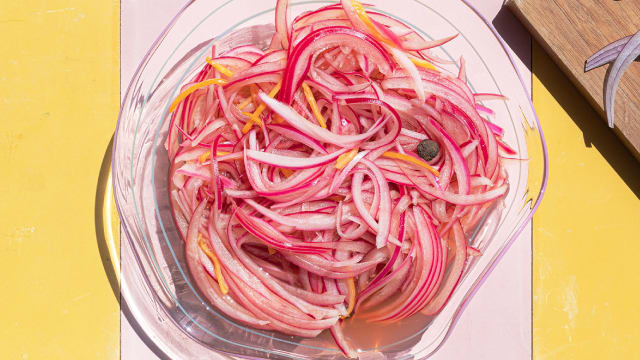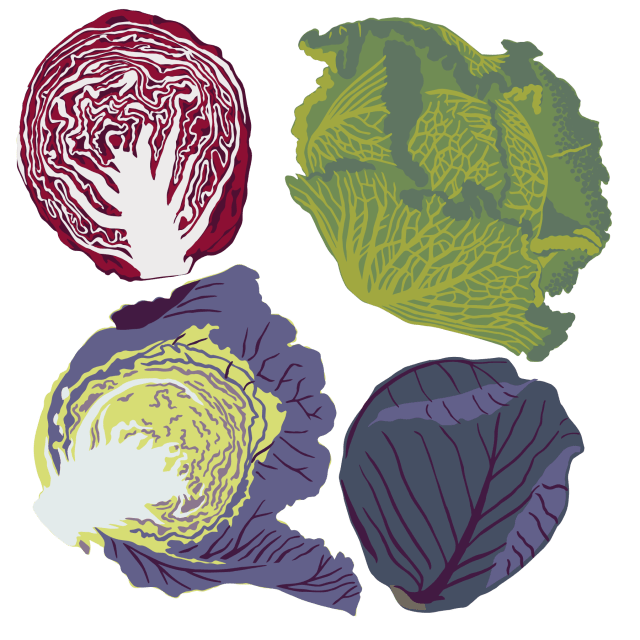
Simple Sauerkraut

Simple Sauerkraut
Description
Cabbage on its own is full of fiber and lots of beneficial compounds. Fermenting it makes it easier to digest, and adds a probiotic element, which like fiber supports gut health and may carry significant additional benefits. This two-ingredient method is the perfect introduction to lactic acid fermentation, a technique that preserves food while improving its flavor and nutrition.
NOTE
Any sturdy vegetable can take well to this treatment
Ingredients
1 quart MAKES
- 1 head of cabbage, cored and shredded, a few large outer leaves reserved
- Salt
Directions
-
Step 1
Weigh the cabbage on your scale, calculate 2% of that, and weigh out that much salt. -
Step 2
Put the cabbage in a large bowl and sprinkle the salt over it. Toss well, and then knead the cabbage until a squeezed fistful drips readily. Pack the cabbage into a wide-mouth jar, put a folded outer leaf on top, put in a weight, and loosely lid the jar. Make sure the brine is over the top of the veg. If not, wait until the next day and check again. Add a little brine if needed — a pinch of salt in a Tbsp or 2 of water — and then put the lid back on (loosely). -
Step 3
Put somewhere cool for 2 weeks to 4 months, depending on how sour you like it. Move the jar to the fridge when you think it’s done; this will slow down the fermentation dramatically.
Explore Recipe Ingredients
About the author
More by Peter Barrett

Beet Salad
This simple salad is almost a quick pickle, using a bright vinaigrette to balance the beets’ earthy sweetness. A bowl of these enhances just about any meal.

Belizean Pickled Onions
This tangy, crunchy, and fiery red onion condiment from Belize brightens up sandwiches or salads

Braised Artichokes
Try this antioxidant-rich recipe of braised artichokes in white wine sauce and dressed in olive oil





